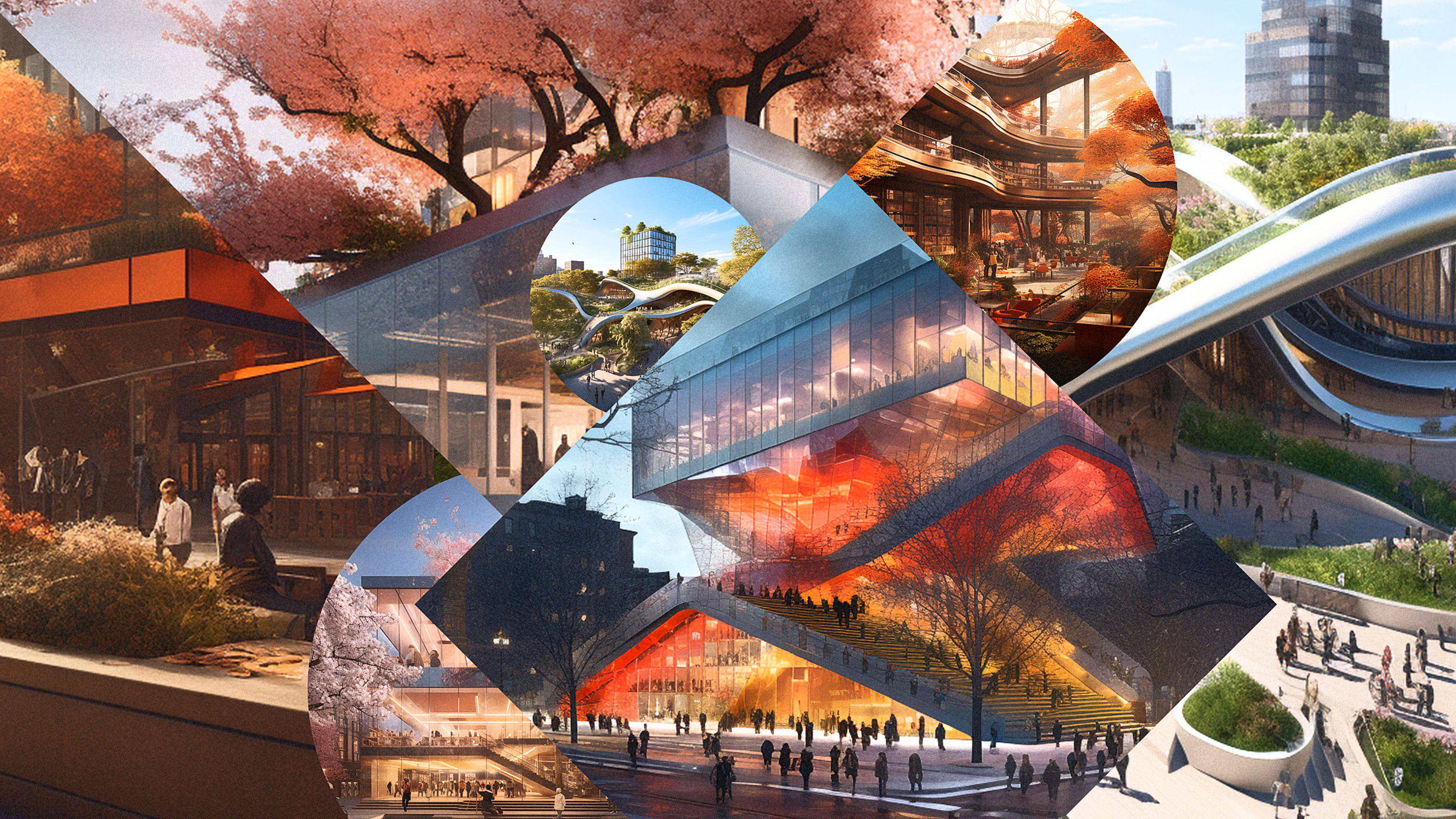When generative artificial intelligence went mainstream last year in the form of easily accessible and nearly effortless image-making tools, it hit the architecture profession like a psychedelic wonder drug. Architects are in the business of translating ideas into buildings through dozens of sketches, drawings, renderings, and models. So, when tools like DALL-E 2, Midjourney and Stable Diffusion came out, they became irresistible mini-factories of design ideas, building concepts, and even photo-realistic renderings of potential projects.
Over the past year, AI has opened a door to a new visual world that has irrevocably changed the profession. And as AI tools have expanded and evolved, so have the ways architects are putting them to use. A growing number of architecture firms are now asking how these tools can help them do their work and stay in business. Few believe these tools will replace the humans in their industry, but most agree they are defining a new age of architecture.
Fast Company got a look behind the scenes at four major architecture firms practicing around the world to learn how generative AI tools are being integrated into an age-old profession. From sketching concepts to automating repetitive tasks, these firms are already putting AI to work on spaces and buildings that will one day stand in cities around the world. Here’s how AI processes are already revolutionizing the ways those spaces get designed.
Refining the design prompt
To generate new ideas for vertical mixed-use buildings, a researcher at Hickok Cole, a 110-person architecture firm headquartered in Washington D.C., turned to a chatbot. John Lynch, a designer at the firm, had received an internal research grant to spend some time developing prototypes for what taller mixed-use buildings could look like. It was in February, and the AI question-and-answer tool ChatGPT had been available for public use for a few months, so Lynch decided to use the tool to crowdsource some ideas about what his research prototype should include. The conversation with the chatbot quickly turned from a glorified Google search to a full-on design exercise.
Recognize your brand’s excellence by applying to this year’s Brands That Matter Awards before the final deadline, June 7.
Sign up for Brands That Matter notifications here.
